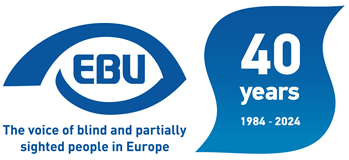Touch to learn, touch to communicate
Within a series of conferences about “Sensory issues and disability” (“Olfaction, memory and learning” in 2009, and “Listening, acting, music and brain plasticity” in 2011), INS HEA (Institut national supérieur de formation et de recherche pour l'éducation des jeunes handicapés et les enseignements adaptés- National higher institute for training and research on special needs education- http://www.inshea.fr), organized an international conference on the sense of touch, in Paris, 17-19 March 2016. This event was organized in partnership with Universcience and took place at the Science Museum in Paris, a museum which aims to be fully accessible to people with disabilities. The symposium was organized in plenary and posters sessions, round tables and exhibitions. It aimed to:
- Identify current scientific knowledge about touch.
- Show how the use of touch, interacting with other senses and with language, may foster learning processes, autonomy and access to culture, particularly for people with disabilities or special needs, but also for non-disabled people.
- Allow participants to meet and exchange views so as to mutualize good practices and skills in this field
For those reasons, presentations did not only focus on people with visual impairments and on school matters. Around 390 people participated, from 18 countries besides France (Belarus, Belgium, Bulgaria, Canada, Colombia, Cyprus, Czech Republic, Denmark, Finland, Germany, Italy, Japan, the Netherlands, Norway, Sweden, Switzerland, the United Kingdom, the United States). They were researchers (psychology, education, linguistics, neuroscience, computer sciences…) students, teachers, educators, therapists, culture professionals, parents, people with and without disabilities. Papers accepted by the scientific committee were presented by researchers as well as practitioners.
The opening session started with a brilliant presentation by Vincent Hayward (Pierre and Marie Curie University, Paris) about the state of the art concerning touch, as well as presentations on sensory substitution. Other sessions showed how touch and haptics (touch in movement) may not only help students with visual impairments but also regular students or struggling learners, in inclusive settings. The role of touch in interpersonal communication was discussed, in particular communication between babies and mothers, or with children with multiple disabilities.
Oral and written presentations addressed the issue of communication for people with deafblindness: Riitta Lahtinen (Finland) and Russ Palmer (UK) made a strong impression on the audience when presenting the resources they developed to enhance the quality of communication.
Of course, in the country where Braille was invented, the questions of perceiving and learning Braille had to be addressed: Torø Graven (University of Oxford) lectured on Discrimination strategies for Braille and Mira Tzvetkova-Arsova (University of Sofia, Bulgaria) gave a presentation on assessment of tactile discrimination skills of blind students of primary school age. A session was also dedicated to reading tactile pictures and raised line drawings: this round table lead to lively discussions.
The topic of the closing session was so appealing that most participants stayed until the end to learn about adapting museums, and access to art. Very promising experiences in Italy and France were shown.
A book is planned on the topic, with chapters written by most of the presenters. Soon some audio recordings and some PowerPoint presentations are downloadable from the INS HEA website: http://www.inshea.fr/fr/content/colloque-international-ins-hea-toucher-… then click on “consulter les interventions du colloque”.
Nathalie Lewi-Dumont,Associate Professor, INS HEA Grhapes,
58, avenue des Landes, 92150 Suresnes, France
nathalielewi@gmail.com
INSHEA website: http://www.inshea.fr

